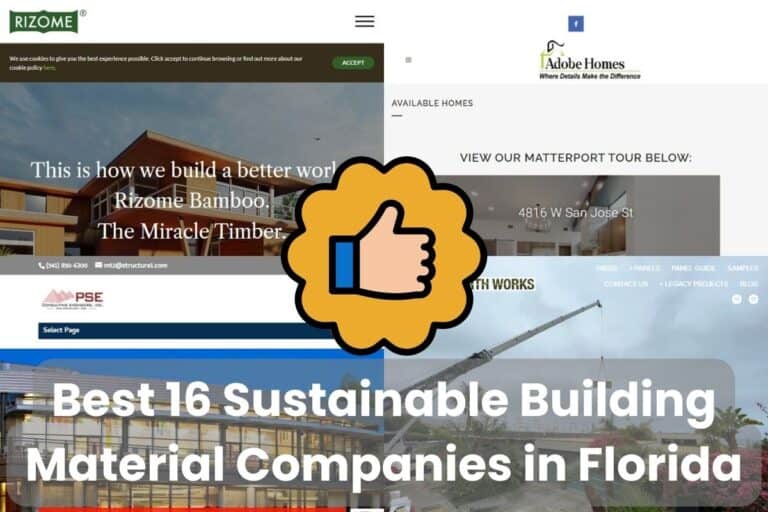Earthbag vs. Other Sustainable Building Methods: Who Wins?

Images courtesy of Nile Post Uganda Ltd., Greenhomebuilding.com, and HOMECRUX.
As the world continues to grapple with the devastating effects of climate change, sustainable construction methods have emerged as a crucial tool for mitigating environmental damage.
From earthbag, strawbale, and cob to rammed earth, a wide variety of sustainable building techniques are available to homeowners and developers.
Earthbag building has gained significant traction as a sustainable building method in recent years. However, how does it compare to other sustainable building methods? Is it the best bet for your next construction project?
In the rest of this article, I’ll compare earthbag vs. other sustainable building methods. This will help you narrow down to the best fit for your needs.
So buckle up, and let’s get started!
Sustainable Building Methods: Direct Comparison
The table below compares the common sustainable building methods in terms of lifespan, cost, and R-value:
| Method | Lifespan | Cost Per Square ft | R-Value |
| Earthbag | 100 years | $7 to $15 | R26-R30 |
| Bamboo | 6 months to 30+ yrs | $203 to $378+ | R0.72 per inch |
| Rammed Earth | 1,000+ years | $50 to $225+ | R22-R30 |
| Cob | 10,000+ years | $5 to $200 | R-0.22 per inch |
| Cord | 100+ years | $125 to $140 | R20.5 |
Table 1: Comparison between sustainable building methods
Earthbag Building
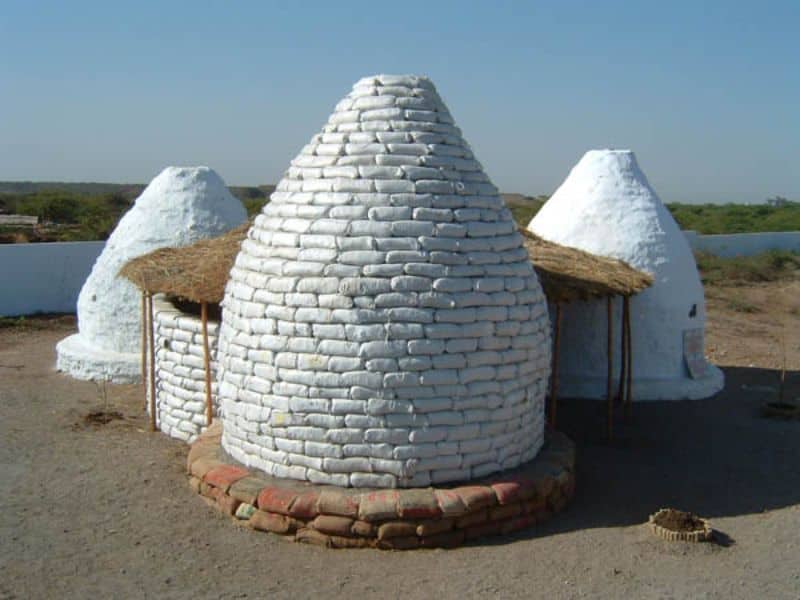
Earthbag building is an eco-friendly and sustainable building technique that uses bags filled with earth or other locally-sourced materials to build walls.
Earthbags are usually made from durable materials such as polypropylene, burlap, or other natural fibers.
Once filled, the bags are stacked in rows, much like bricks or cinder blocks, to form the walls of a building.
The earthbags are then compressed and tamped to create a sturdy and stable wall structure. Once the walls are in place, they are covered with stucco, plaster, or earthen finishes for a finished appearance.
Advantages of Earthbag Building
- Inexpensive: Earthbag building is an inexpensive construction method that costs between $7 and $15 per square foot.
- Excellent insulation: Earthbag building creates thicker walls with high R-values ranging between R-26 and R-30. These high R-values provide excellent insulation that helps reduce heating and cooling costs.
- Easy to learn and build with: Unlike conventional construction, which involves complex processes, earthbag building only involves filling the bags with earth, compressing, and tamping them down.
- Durable and stable houses: The thicker walls of earthbags result in durable homes resistant to the elements.
- Versatile: Apart from the rounded shape, you can build different styles of houses using earthbags.
Disadvantages of Earthbag Building
- Less floor space: The thick walls created by the earthbags eat into the floor’s space, leaving less space for occupation.
- Labor intensive: Filling the bags with earth or dirt and tamping them in place is labor-intensive. This can result in high labor costs and longer project timeframes.
- Limited aesthetics: Earthbag walls have a distinct appearance. Therefore, they may not be suitable for everyone’s aesthetic preferences.
Bamboo Building
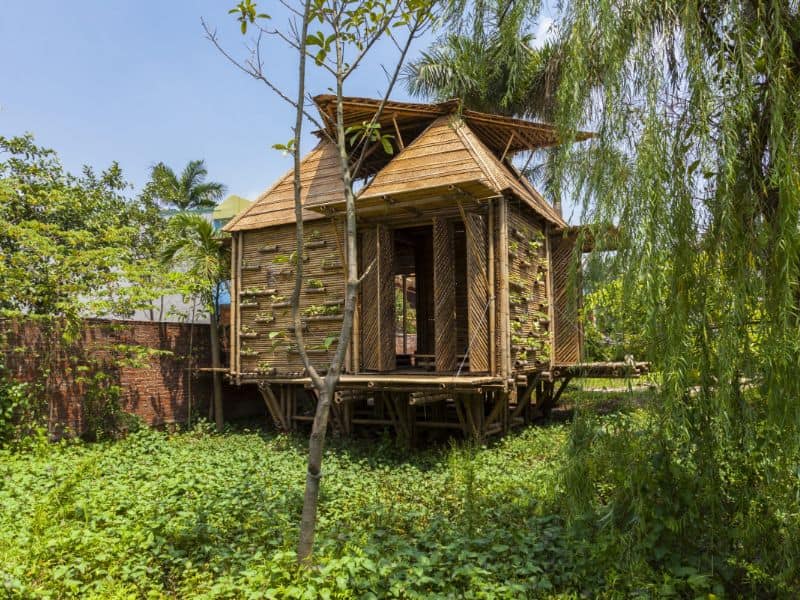
Bamboo is one of the most eco-friendly, sustainable, and renewable building materials. It’s mainly used to build walls, partitions, posts, beams, and roofs.
Advantages of Bamboo Building
- Lightweight: Bamboo is much lighter than other building materials like concrete and steel. Thus, it’s easy to transport and install.
- Aesthetically pleasing: Bamboo has a distinctive and attractive look that enhances the aesthetics of any building.
- Excellent strength: Bamboo can have a tensile and compressive strength of 1,400 psi and 14,000 psi, respectively. These are more than those of many types of concrete.
- Highly versatile: Bamboo is highly flexible due to its combination of fiber and parenchyma cells that increase its flexural properties. Therefore, it can be easily shaped and formed into complex structures.
- High strength-to-weight ratio: Bamboo’s strength-to-weight ratio is higher than steel’s. As a result, bamboo is an ideal building material for earthquake-prone areas.
Disadvantages of Bamboo Building
- Susceptible to weather: Bamboo can be affected by rain and sun, leading to cracks, breakage, and discoloration over time.
- Pest infestation: Bamboo is prone to termite and other pest attacks if not treated with chemicals or preservatives.
- Short lifespan: Bamboo structures have a lifespan of between 6 months and 30 years, depending on preservation and maintenance. This is much shorter than other sustainable building methods.
- Expensive: Building a bamboo home costs between $203 and more than $378. This is more costly than other methods.
Rammed Earth Building
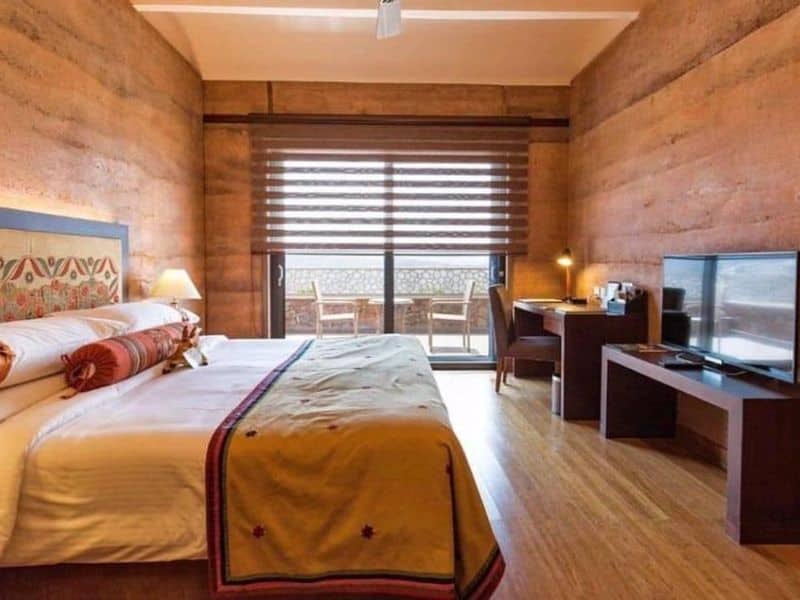
Rammed earth is a sustainable building technique that involves ramming aggregates like sand, gravel, silt, and clay into formworks.
It’s an ideal method for building foundations, walls, and floors.
Advantages of Rammed Earth Building
- High thermal mass: The dense walls created by rammed earth have high thermal mass. This helps in retaining and releasing heat, creating a comfortable internal climate.
- Fire resistant: These walls are fire resistant as the aggregate particles are non-flammable and form a tight bond when rammed together. The tight bond eliminates the oxygen necessary for combustion.
- Excellent insulation: The thick rammed earth walls have average R values between R22 and R30, making them excellent insulators.
- Highly durable: The rammed earth walls are incredibly dense, making them highly durable. They can last more than 1,000 years.
Disadvantages of Rammed Earth Building
- Time-consuming: Preparing the aggregate and ramming takes time, resulting in longer times for the completion of projects.
- Water damage: The rammed earth walls can easily absorb water and weaken if not properly sealed.
- High labor costs: Labor costs may be high due to the need for professional help in the ramming process.
Cob Building
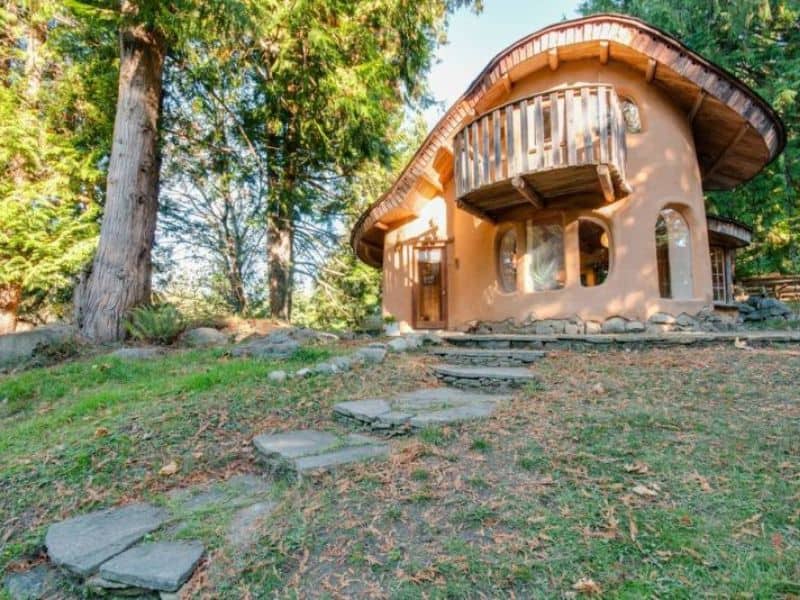
This method involves using clay-like lumps of sand, soil, and straw. Unlike straw bale construction, cob construction doesn’t use individual stacked bales/blocks.
Instead, each layer of cob mixture is pressed into place and left to dry before the next layer is added to incrementally raise the height of the wall.
Advantages of Cob Building
- It’s inexpensive.
- Highly flexible.
- Highly durable and resistant to earthquakes.
- Excellent acoustic proofing.
Disadvantages of Cob Building
- It’s labor-intensive.
- Highly susceptible to moisture and water damage.
- In-depth expertise needed.
- It may be challenging to get a building permit.
Cord Building
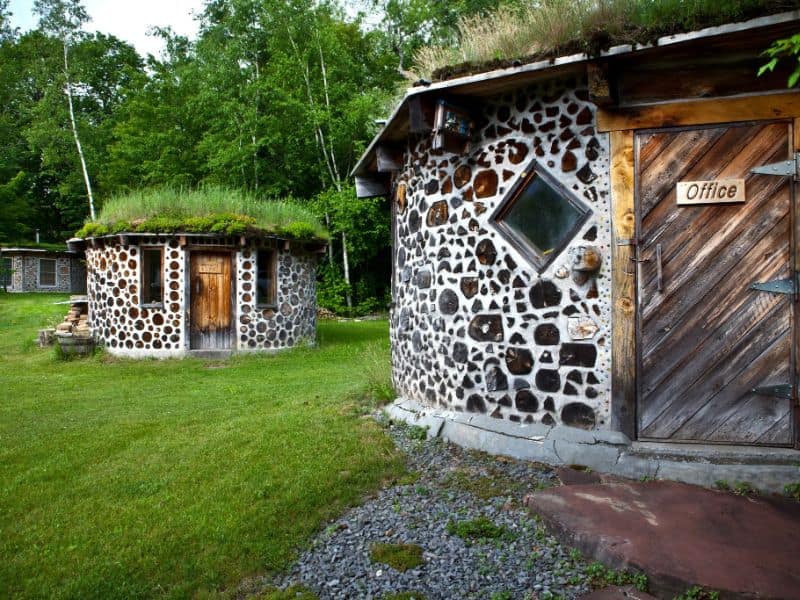
Cordwood building, or stack wall construction, involves laying short logs, branches, and sticks horizontally between two walls. The logs are secured with mortar or cob.
Advantages of Cord Building
- It’s cheap since the material are primarily found in nature.
- It’s recyclable because the logs can be reused in different projects.
- It requires minimal tools for construction.
- Excellent insulation properties.
Disadvantages of Cord Building
- Misaligned logs may cause stress on walls, weakening them.
- It’s highly prone to pests and moisture-related damage.
- Time-consuming since it requires precise measurements and careful construction.
- Cordwood floors tend to be uneven due to irregular log sizes.
Earthbag vs. Other Sustainable Building Methods: The Final Verdict
Each sustainable building method has its advantages and disadvantages. Therefore, the best sustainable building method comes down to the one that best meets your needs.
The best choice will depend on project needs, available resources, and local regulations. As a result, it’s advisable to consult with a professional builder before making the final decision.
Now that you have a comparison between earthbag vs. other sustainable building methods, check out this guide on how to make a root cellar using earthbags.




